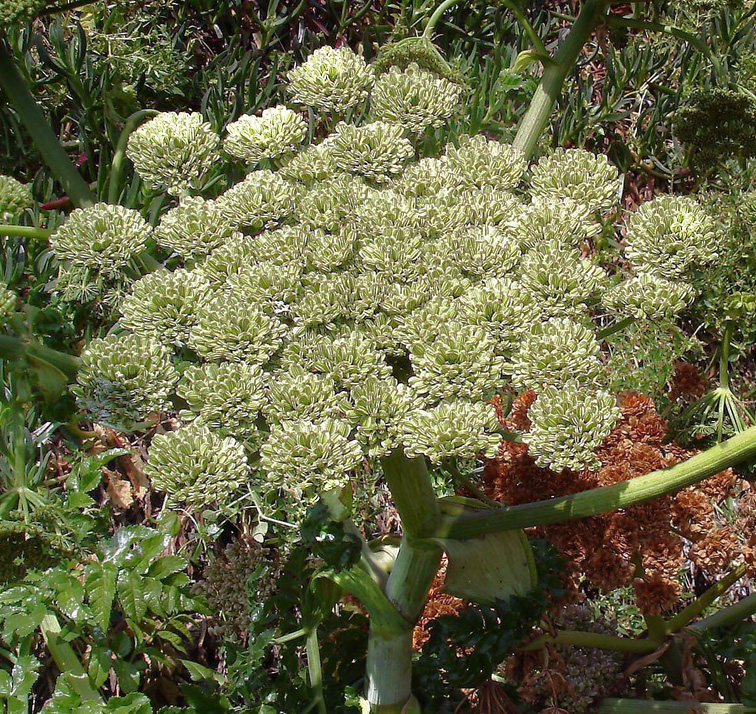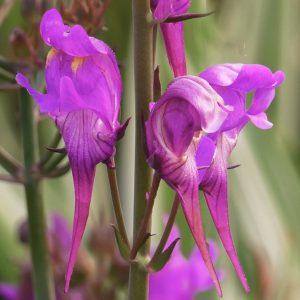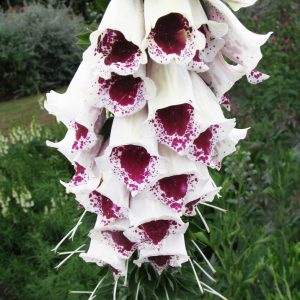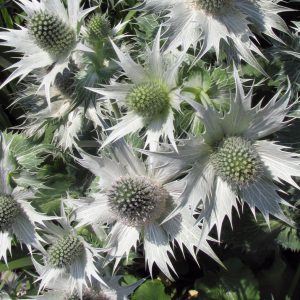Angelica pachycarpa
GLOSSY ANGELICA
SALE: Buy 1 get 2 packs
Angelica pachycarpa is a stately and majestic garden plant, as well as a really useful edible for the veggie garden, plus delightfully fragrant.
With striking, glossy, architectural leaves, and a slightly smaller stature than many others, Angelica pachycarpa is an asset.
With a wealth of both practical uses and picturesque tales associated with it (see below).
Not permitted for entry to WA
Handsome architecture in the garden
The foliage is large, handsome and architectural.
So it makes a wonderful background plant for smaller flowers.
While the large, starburst shaped flower heads add further architectural strength on 90cm. stems in late summer and autumn.
Striking cut flowers
Angelica heads also make wonderful and long lasting cut flowers in a vase, and can give a floral arrangement real strength.
Spicy scent of Angelica
The whole Angelica plant has a spicy, refreshing scent, rather reminiscent of juniper berries.
Insect repelling companion plant
Angelica pachycarpa is a useful companion to plant near your Brassica crops such as Cabbage and Cauliflower, and helps to deter pesky insects.
Self sowing garden regular
Angelica pachycarpa is a very showy, upright, self-sowing biennial.
So after flowering each year, let it drop some seed to renew plants for the following year.
Hardy woodlander
Plant Glossy Angelica in Part Shade; Dappled light under trees and shrubs; Morning Sun. It absolutely loves woodland conditions with plenty of leaf litter.
Where it is frost hardy and copes in a wide variety of soils, including clay.
However it really relishes heavier soils, plenty of mulch and even boggy spots; while it may struggle in very dry sandy soil.
Hardy, easy, low maintenance, self renewing ancient herb.
SEED SOWING ADVICE:
Sow any time indoors in punnets, or scatter directly in garden in autumn and winter.
Sow indoors for quick & ealy plants: Sow on surface of good quality seed raising mix.
Then barely cover the seed with 1.5mm of sieved mix.
Because these seeds need light to germinate.
Now thoroughly moisten the punnet by standing in a shallow water bath. And allowing the moisture to percolate up to the surface of the mix from below.
Now drain and place the moist, sown punnet in a warm, well-lit position.
Temperatures of 15-20°C approx. are ideal for rapid and optimum germination.
Continue to keep the punnet moist by misting the punnet from a spray water bottle.
These seeds really respond to stable moisture levels.
Seeds germinate in approx. 21 days across 2-4 weeks.
However if the seeds are shy to germinate – it means they are dormant, and need a period of chilling to break dormancy.
So wrap the punnet in cling-wrap or a plastic bag, and keep in fridge (not freezer) for 2-4 weeks.
Then return the moist punnet to the warm, well-lit position at approx. 15-20C for germination. But do not discard the punnet too quickly, as seeds will continue to germinate over a period. Which is normal for Angelica.
Seed Count: 10 large seeds per pack approx.
(We always aim to exceed the stated seed count, and give a generous serve).
COOKING, HISTORY, MYTHS & LEGENDS
Angelica pachycarpa is a completely useful plant, on top of being so decorative.
Because leaves, roots, stems and seeds are all edible, and all have modern culinary and historic medicinal uses.
Cooking
Young stems are harvested and chopped raw into salads, while thicker stems are delicious steamed and served with butter. For a taste sensation try roasted stems together with onions and pork.
Candied Angelica stems are a cake maker’s delight.
While the dried Angelica seeds give a real lift to soups, scrambled eggs, custards and white sauce.
And Angelica’s distinctive flavour is an essential ingredient in much loved liqueurs such as Bénédictine, Vermouth, Dubonnet and Chartreuse.
Medicinal
Angelica has long been used to aid digestion, and angelica chews are still popular today to settle the tummy and help calm travel sickness.
Though in the 17th century it was favoured as a preventative for plague, and was even valued for warding off the spells of witches!
History, myths and legends
The botanical name for Angelica comes from Latin, where the word “angelica” means ‘angelic’.
And it refers to the plant’s medicinal and healing properties being on the side of the angels.
Click here for Nursery Open Days & Open Gardens Information
https://www.gardivalia.com.au/open-gardens
Click here to go back to Seeds Shop
https://www.seedscape.net.au/shop/
Related products
-
Add to WishlistAlready In WishlistAdd to Wishlist
-
Add to WishlistAlready In WishlistAdd to Wishlist
-
Add to WishlistAlready In WishlistAdd to Wishlist
-
All
Eryngium giganteum
‘Miss Willmott’s Ghost’
MISS WILLMOTT’S GHOST SEA HOLLY
$5.00 AUD Add to cartAdd to WishlistAlready In WishlistAdd to Wishlist





